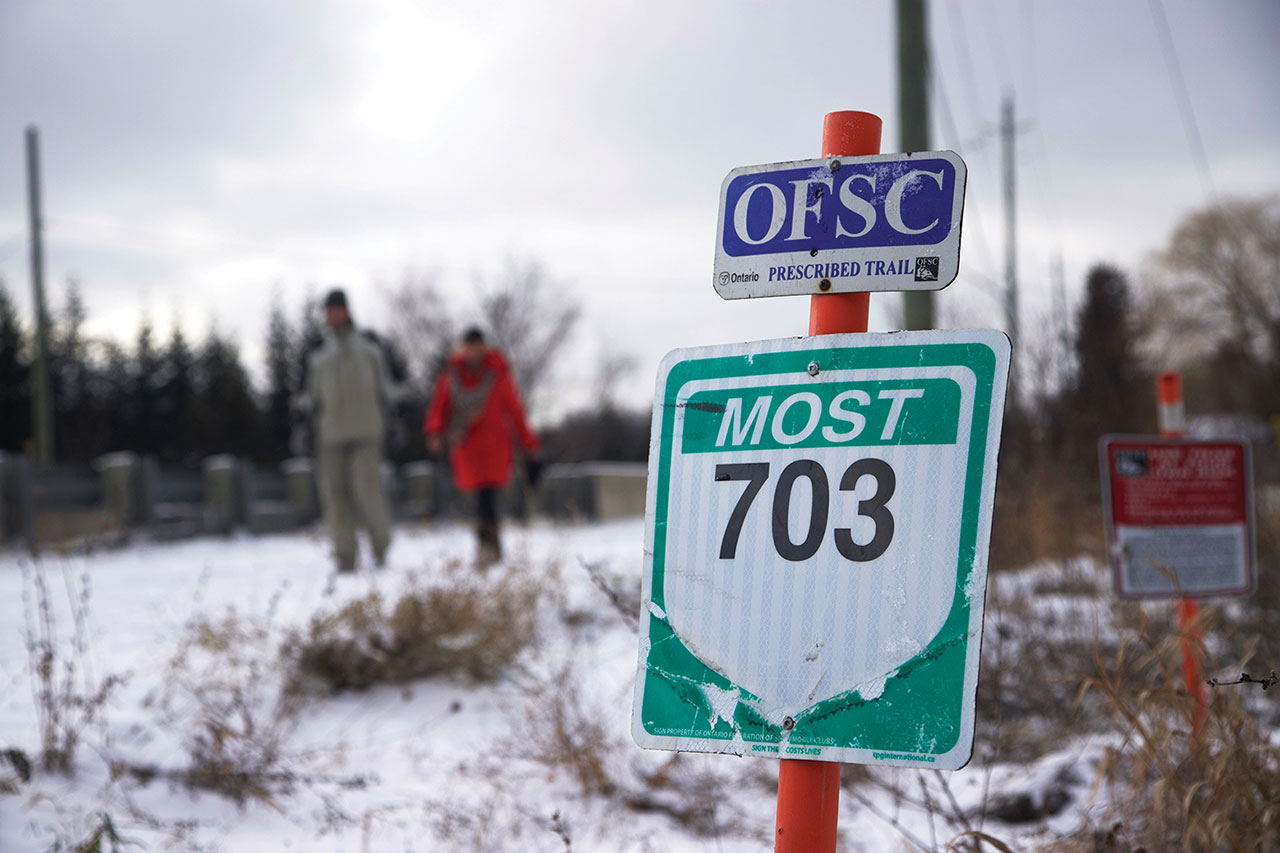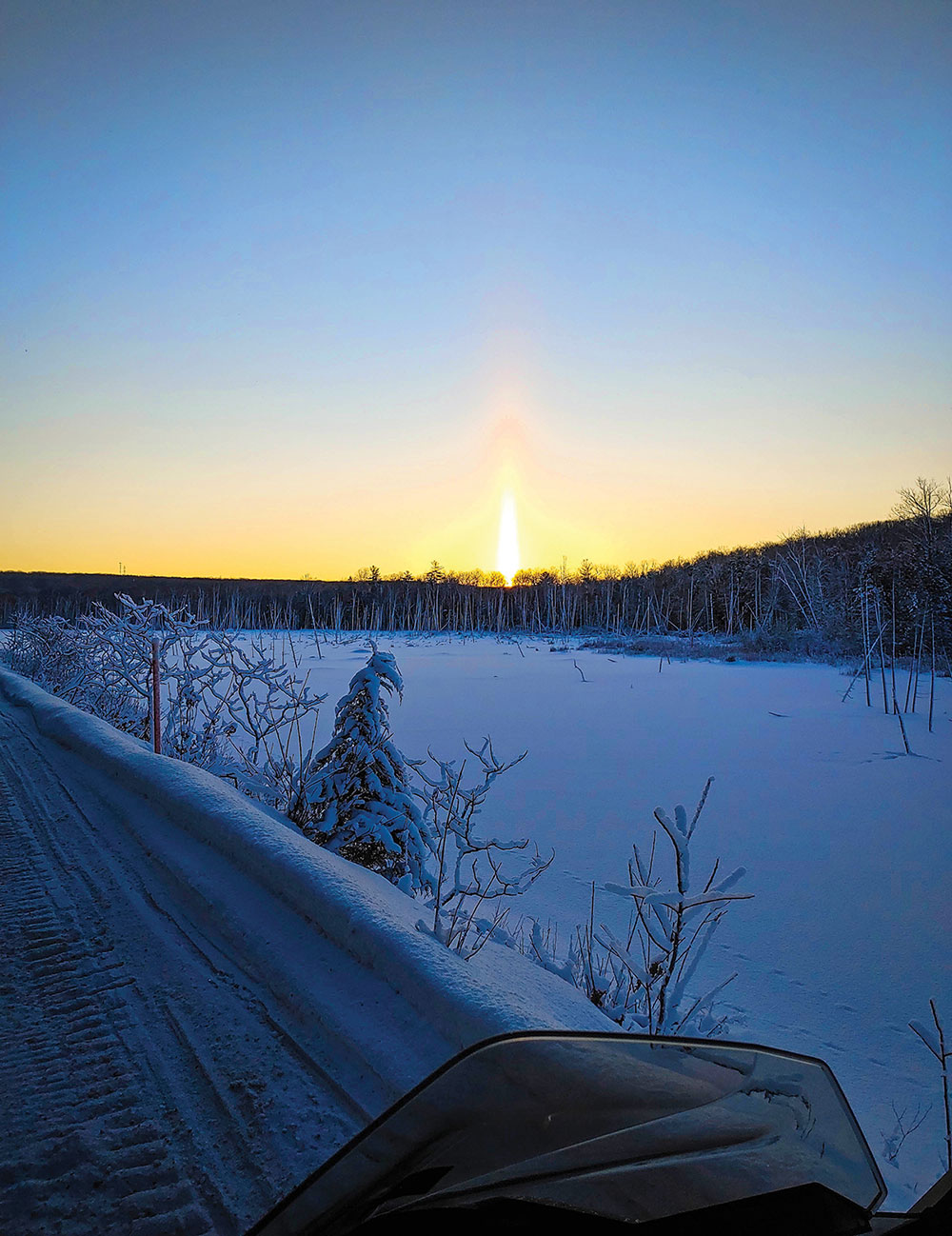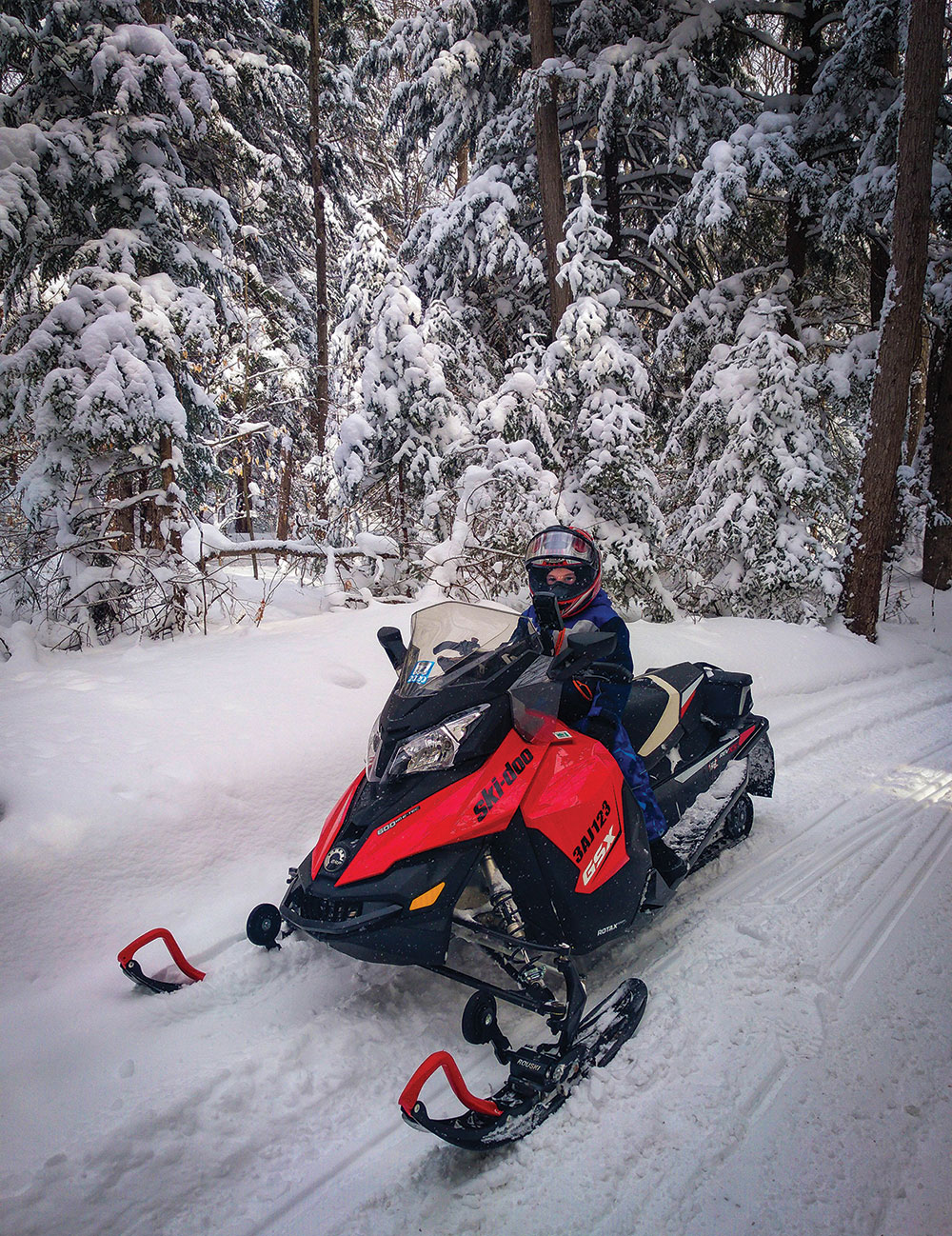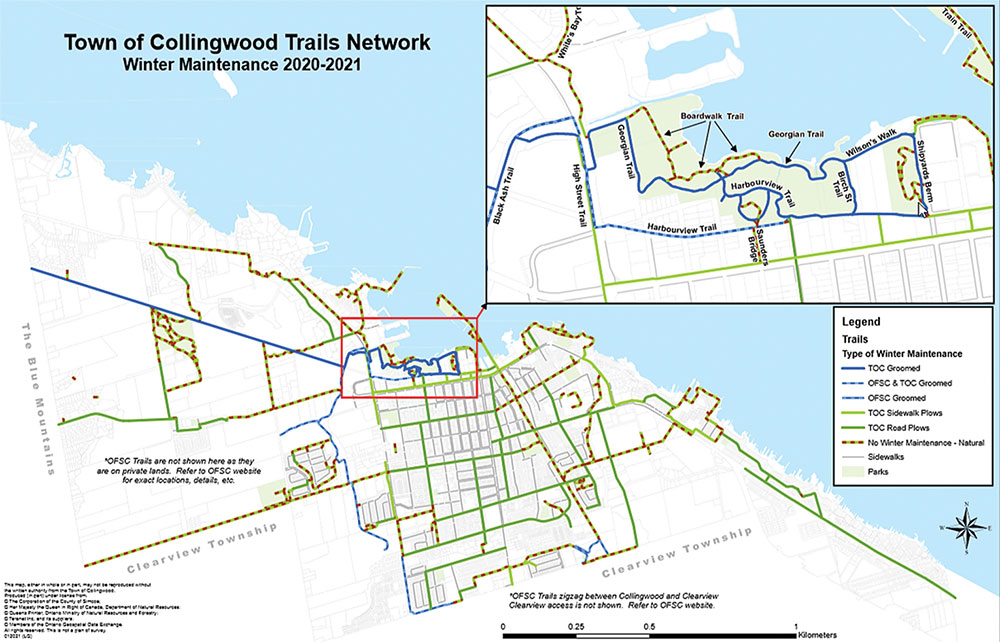You can easily picture the scene. You are out with your family, snowshoeing on a pristine winter’s day, enjoying the quiet, when all of a sudden, out of nowhere, a snowmobile roars around a corner and gives everyone a fright. And while it’s likely you weren’t in any imminent danger, the scene does raise questions about permitted uses on our local trails — and brings to mind the fact that many of the trails were created by snowmobile groups themselves in the first place. It’s an issue that some snowmobile groups are lobbying to shed light on, especially while the region — and pressure on our local trails — continues to grow.
Situated in Ontario’s snow belt, Southern Georgian Bay has long been renowned as a winter playground, with plenty of activities for everyone. While most people associate the region with skiing (both alpine and nordic), snowmobiling continues its long-standing popularity in the region as a great way to get outside and enjoy the season.
“We have more kilometres of snowmobile trails than roads here,” says Kevin Hagen, regional manager of Mid Ontario Snowmobile Trails (MOST). “Many of our trails are over 30 years old, with not much new added since then.”
MOST is an association of ten snowmobile clubs in District 8 of the Ontario Federation of Snowmobile Clubs, with member clubs throughout Simcoe and Grey Counties and the municipality of Kawartha Lakes. The clubs boast more than 4,000 members combined, and groom and maintain more than 1,000 kilometres of trails throughout the region.
MOST trails include public rights of way, private properties, and even some municipal roads and trails that connect the rural system to gas stations, restaurants, hotels, and retailers in town. Hagen offers several examples of these: downtown Midland, Mylar & Loreta’s Restaurant in Singhampton (“always packed”), Ted’s Range Road Diner west of Meaford, and a gas bar and restaurants in Craighurst.
Neal Owen, president of the Blue Mountain Snowdrifters Club, describes his winter sport as, “a healthy and fun family activity,” and he says that, according to recent research, it offers at least the same amount of physical exercise as alpine skiing. “Sledders are not what many people perceive,” he says. “They’re from all walks of life and ages — locals and weekenders alike — many of them well-educated, with high incomes.”
Owen goes on to say that snowmobiling generates substantial economic benefits for rural communities and their businesses. According to a 2019 report, snowmobilers spend about $86 million in the local economy annually and the numbers are growing. “COVID-19 actually impacted our sport in a positive way. Our trails continued to operate, there was an unbelievable increase in snowmobile sales, manufacturing went up 16 per cent, and we saw much more new traffic,” he says.
All of this is good news for the sport, except for two troubling trends, largely associated with more people moving into the region. Those newcomers like to ski, snowshoe, and walk their dogs on trails, and they take offence to the noise, speed, and pollution associated with snowmobiles. These factors have not only generated complaints to municipalities, but also created safety issues on the trails.
According to Dean Collver, Collingwood’s Director of Parks, Recreation and Culture, a Town bylaw provides snowmobile access from Ontario Federation of Snowmobile Clubs (OFSC) trails to certain municipal trails, so that sledders can visit gas stations, restaurants, and businesses. But these access trails are in jeopardy due to safety concerns and opposition from residents close by.
“Over the years, as Collingwood has grown, some residents in new developments around existing snowmobile trails have been complaining about noise and speeds,” says Collver, identifying the Train Trail, the Hamilton Drain Trail, and the Creekside subdivision as areas of concern. “We are working with residents, snowmobile associations, and the OPP to review complaints and safety considerations. Most sledders are responsible people, but a few are threatening the balance, speeding on trails when they’re not open, and not recognizing other users of multi-use trails.”

“We are working with residents, snowmobile associations and the OPP to review complaints and safety considerations. Most sledders are responsible people, but a few are threatening the balance.”
Can motorized and people-powered winter activities safely coexist? Pointing out the fact that all municipal, multi-use, and even Nordic ski trails need to be groomed with the aid of snowmobiles, Neil Owen of the Blue Mountain Snowdrifters says, “The impetus for creating trails in Collingwood was the prominent Christie family, avid sledders themselves, who moved into town and established walking trails for people to enjoy in the winter.”
Owen believes that his club’s trails are being pressured these days. “While there are city people buying properties in the area who don’t appreciate snowmobiles, a lot of them are sledders who are happy with the trails available,” he says. “In a way, though, we’re shooting ourselves in the foot. Some sledders aren’t following the rules, crossing private property. Others are just plain idiots, beefing up the horsepower of their sleds or changing their mufflers to make them louder.”
The Snowdrifters are actively reaching out to local municipalities to gain support for their sport. Ideally, they would like to see the creation of wider multi-use trails, as is happening in Quebec, to accommodate side-by-side sledding, walking, and Nordic skiing. Ultimately, they believe that safety, education, and mutual respect are key to everyone enjoying winter in our region, regardless of how they choose to do so.















